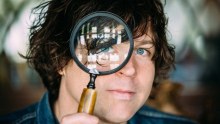X-ray images just as useful when viewed on smartphone, study finds
Posted
Smartphone photos taken of X-ray images can help medical professionals diagnose common lung problems in babies just as effectively as the standard films do, new research has shown.
Key points:
- Study found doctors could accurately diagnose collapsed lung by viewing X-ray image on smartphone
- Using smartphone images would benefit rural patients who need quick diagnosis
- Researchers want guidelines about using smartphones reviewed
A study at the Royal Women's Hospital in Melbourne examined how standard X-ray films of babies suffering a suspected collapsed lung compared to photos of those X-rays taken on mobile phones.
Lead researcher Jennifer Dawson said the results added to evidence mobile phone cameras could be used with accuracy as a way of diagnosing illness, especially for people in rural or remote areas.
"The findings give doctors confidence to quickly send X-rays images to specialists based in another location, and receive a quick diagnosis, advice on treatment and recommendations to transfer babies to specialist care if needed," Dr Dawson said.
Doctors focused on a condition called pneumothorax, when air leaks into the space between the lung and chest wall.
Consultant neonatologist Marta Thio said without an X-ray, pneumothorax could be mistaken for other respiratory diseases, which could lead to incorrect treatment and make the condition worse.
"This research shows we can make a diagnosis far more quickly while maintaining accuracy, simply by using smartphone images in conjunction with speaking to the doctor," Dr Thio said.
"We do not have to wait for both clinicians to be in front of a computer to view images sent by email, which could potentially delay diagnosis."
Findings important for rural diagnoses
In the study, doctors viewed 40 images of baby's lungs, on an X-ray and then as a smartphone image, one week apart.
Researchers found there was no difference in the accuracy of detecting collapsed lungs in babies.
In fact, when the doctors looked at the smartphone images, they had a slightly higher rate of correctly identifying collapsed lung, compared to when doctors looked at X-rays.
Dr Dawson said the findings had significant implications for making sure babies with respiratory problems in regional and remote Australia received a quick and accurate diagnosis.
The authors of the study said guidelines about viewing smart phone images may need to be reviewed after their findings.
The findings of the research has been published in the Journal of Paediatrics and Child Health.
Topics: medical-research, health, doctors-and-medical-professionals, babies, family-and-children, infant-health, diseases-and-disorders, child-health-and-behaviour, melbourne-3000, vic, australia








